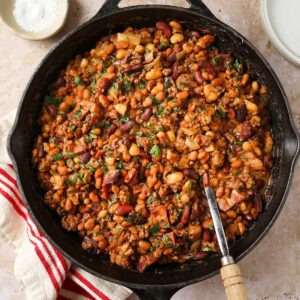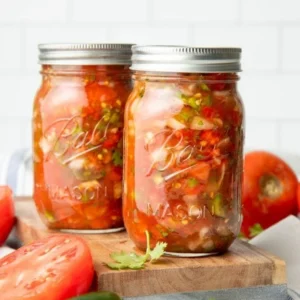-
Dive into the fiery world of hot sauces, a staple condiment that elevates the heat and flavor of many dishes around the globe. Originating from various cultures, hot sauces can range from mildly spicy to intensely hot, making them incredibly versatile and beloved. They often feature unique blends of peppers, spices, and other ingredients, each contributing to the sauce’s distinct flavor and texture. The allure of hot sauce is not just in its heat, but in its ability to transform a simple meal into something extraordinary.
-
Main Components:
-
1 cup fresh chili peppers (e.g., habanero, jalapeño), finely chopped
-
3 garlic cloves, minced
-
1/2 cup distilled white vinegar
-
1 teaspoon salt
-
2 tablespoons sugar (optional for balance)
-
-
Substitutions:
-
Apple cider vinegar for a milder tang
-
Honey instead of sugar
-
Bell peppers mixed with hot peppers for less heat
-
-
Prepare the Ingredients: Wash the chili peppers, remove the stems, and finely chop. Mince the garlic.
-
Cooking the Sauce: In a saucepan over medium heat, combine peppers, garlic, vinegar, salt, and sugar. Bring to a simmer.
-
Blending: After simmering for 20 minutes, allow the mixture to cool. Then, blend until smooth for a traditional hot sauce texture.
-
Straining (Optional): For a smoother sauce, strain the mixture using a fine mesh sieve.
-
Bottling: Transfer the hot sauce into sterilized bottles and seal tightly.
-
Tips: Ensure proper ventilation while cooking to avoid irritation from the chili vapors. Cooking time can affect the sauce’s thickness; adjust accordingly.
-
Enhancing Flavor: Roast peppers before simmering to deepen the flavor.
-
Texture Tips: For a thicker sauce, reduce the vinegar slightly and simmer longer.
-
Vegetarian Twist: Incorporate smoked vegetables like tomatoes or carrots for depth.
-
Regional Flavors: Add local spices or herbs to reflect regional tastes, such as Thai basil or Mexican oregano.
-
Serve your homemade hot sauce with eggs, tacos, or as a dipping sauce. It pairs wonderfully with a cold beer or a citrusy cocktail.
-
Approximately 5 calories per teaspoon, trace amounts of protein and fats, and about 1g of carbs.
-
How long can homemade hot sauce last? Properly sealed and refrigerated, it can last up to 6 months.
-
Is it necessary to sterilize the bottles? Yes, to prevent bacterial growth and prolong shelf life.
-
Making your own hot sauce is a rewarding experience that allows for customization and creativity. Don’t hesitate to experiment with different types of peppers and spices. Share your creations online and inspire others to try making their own!
Ingredients
Step-by-Step Cooking Instructions
Pro Tips and Cooking Techniques
Variations and Customizations
Serving Suggestions



Nutritional Information
Frequently Asked Questions (FAQs)
Closing Thoughts
This guide should provide a solid foundation for your detailed article on hot sauce recipes, offering both a deep dive into the making process and practical tips for perfecting the sauce.



